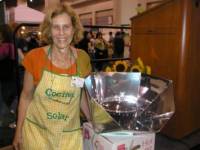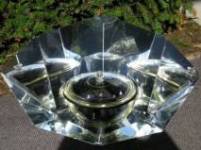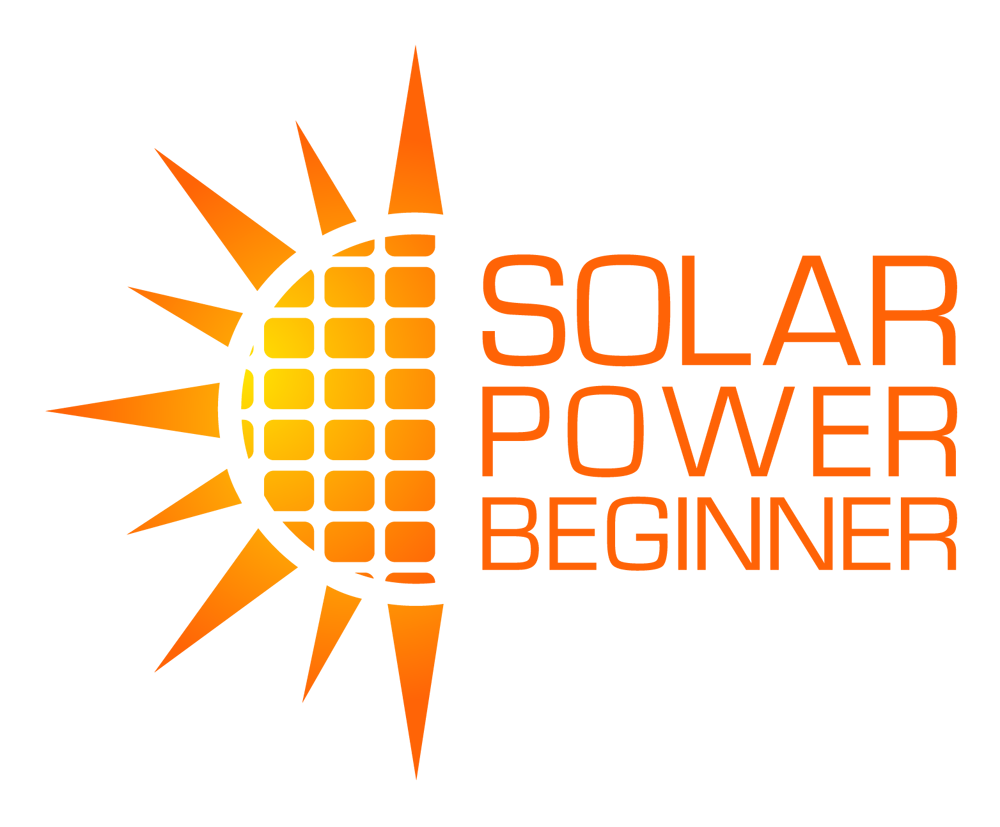A solar oven is the perfect way to get started with solar power.
You can cut your electric bills, keep your kitchen cool all summer, and impress your friends at your next dinner party.
Find out how you can cook your dinner using only the power of the sun in this interview with Louise Meyer of Solar Household Energy:
Just click on the play button below and, after listening to this interview, you’ll probably want a Hot Pot Simple Solar Cooker of your own.
Also, check out our solar oven page for more info on solar cooking.
(If you prefer to read rather than listen, there is a transcript of the interview below the audio)
Solar Oven Magic
SolarPowerBeginner: Hi there and welcome to Solar Power Beginner. Let’s find out what the sun can do for you. Do you want to get started with solar power and not spend thousands of dollars? Then you will definitely want to hear today’s interview.
We spoke with Louise Meyer of Solar Household Energy Incorporated about solar ovens. If you are not familiar with solar ovens, they are little boxes that can cook pretty much anything using only the sun’s rays. For more on these magic little boxes and how you can put one to use, let’s go to Louise.
Number one, for those listeners unfamiliar with solar cooking, tell us how it works and what you need to do?
Louise Meyer: Solar cooking works by trapping the sunlight into some system that transforms them into heat rays. There are three basic kinds of solar cookers.


One is a parabolic that looks like a satellite dish, the second is a box cooker, and the third is a hybrid between the two, which is the one my organization developed.
SolarPowerBeginner: So, the basic idea is with a box cooker you are allowing light in and not allowing the heat to escape.
Louise Meyer: That is right, yes, exactly; the light rays can penetrate the glass, but the heat rays cannot escape.
SolarPowerBeginner: What sort of foods can be prepared in a solar oven?
Louise Meyer: Well, the first one which is a parabolic, it is a focus cooker that you have to keep focused towards the sun. You can fry, but you have to be there present and make sure it remains oriented to the sun that requires an adjustment about every 20 minutes.
The other two types, the box cooker and the hybrid, the panel cooker are slow cookers and function a bit like a crock pot, in that they don’t burn your food and the cooking inside of them is slow and doesn’t need to be attended to, checked maybe once every two hours.
SolarPowerBeginner: Okay. So, the box oven is fairly low maintenance. You can put it in the sun and leave it there and not worry about your dinner getting burned.
Louise Meyer: That is exactly right and the panel… and our panel cooker, which we have named the Hot Pot Simple Solar Cooker is the same; it doesn’t require any attention.
SolarPowerBeginner: Tell us about what your organization, Solar Household Energy Incorporated, is trying to accomplish?
Louise Meyer: Solar Household Energy is an organization located in the Washington DC area that was founded ten… eleven years ago. Our goal was to provide those parts of the world that are dependent on biomass, provide them with a system of cooking.
We spent a good number of years developing a generic solar cooker, which we call the Hot Pot Simple Solar Cooker. It’s like I said before a hybrid between the box and the parabolic.
SolarPowerBeginner: Now, what benefits does solar cooking offer the developing world over using biomass as fuel?
Louise Meyer: It’s safer, cleaner, more affordable technology than firewood. It is money saving, time saving, and safer cooking.
SolarPowerBeginner: Now, from what I have heard, solar cooking is also catching on in countries like the US, Canada, and Britain; have you noticed this interest and if so, what do you think is responsible for it?
Louise Meyer: It is catching on. I think it is just creating awareness of climate change and people wanting to say, “Well, what can I do? What can I do? What small thing can I do that will fit into my life?”
So, I am not too familiar about Great Britain, but I lived in Switzerland for a quite a long time and I know that the Swiss are credited with having more solar cookers than any other industrialized country.
SolarPowerBeginner: Well, that is interesting considering their latitude. So, they still get enough sun to use a solar oven.
Louise Meyer: Yes, they don’t get that much sun, but there are a lot of passionate solar cookers.
SolarPowerBeginner: Interesting. Now the Solar Household Energy Incorporated sells the Hot Pot Simple Solar Cooker as you mentioned. Could you tell us more about how this works, its benefits, and maybe any drawbacks that solar cooker design has?
Louise Meyer: Sure. All right, but I should tell you that we have just decided no longer to sell hot Pot on our website. When people inquire, we are sending them to Gaiam. We lack the manpower to manage all that. What was your other question?
SolarPowerBeginner: Well, how the Hot Pot works in comparison with other solar cookers and also any drawbacks to the solar cooking that you can think of?
Louise Meyer: Oh, yes. There are drawbacks to solar cooking, but the Hot Pot is composed of a pyrex and lid with a black steel enameled pot that hangs inside the pyrex bowl with 2 cm. air space between them. With food inside the black pot, it is placed in the aluminum reflector.
It is fueled by direct solar energy and by indirect solar energy from the reflector. The sun’s rays penetrate the tempered glass ‘greenhouse’ bowl, strike the 5-liter black pot and convert to heat.
The heat is retained around the black pot by the greenhouse, achieving cooking temperatures. The HotPot cooks most efficiently under a cloudless sky, in the shelter of cold winds, and between 10am and 4pm.
SolarPowerBeginner: Now, how long would it take to cook an average meal in a Hot Pot?
Louise Meyer: Well, yesterday I cooked beans and rice. I had presoaked the beans. It was a good sunny day and not too hot and not too many clouds and it took three hours to cook the beans.
SolarPowerBeginner: Right.
Louise Meyer: And about an hour-and-a-half to cook the rice. Beans are about the hardest thing to cook and we recommend that people soak them the night before. If I cook a meat dish, which I do often on weekends like a chicken or a roast with lots of vegetables, I can cook that in two hours.
SolarPowerBeginner: Another bonus that appears to me about solar cooking is that when you are cooking using a solar oven in the summertime, you are also not heating up your house with the oven; do you find that a great advantage?
Louise Meyer: A great advantage; that is what I always tell people, huge advantage because that is probably why I am so passionate about it. I don’t have an air conditioned house.
So, heating up my kitchen unnecessarily is something I really avoid doing. I don’t need to heat up the kitchen at all. I just go right out in the back porch and pop it on the Hot Pot and cook there.
It is a huge advantage. I was once asked, to research, how much money I was actually saving by not using my stove. If I count that I don’t have to air condition the kitchen either, then the amount I am saving is significant.
SolarPowerBeginner: Excellent. Now, we have one final question here. Could you tell us your favorite solar cooker recipe?
Louise Meyer: Well, I probably have several because I end up using two or three solar cookers to make a full course meal.
SolarPowerBeginner: Wow!
Louise Meyer: Often I do, because then you can invite friends over. One of my favorite dishes, I get this lovely lamb roast.
It is deboned. I have put that in there and I will add some sort of middle eastern spices to it and zucchini and eggplant and some peppers and tomatoes and then I will cook that altogether and then in a second cooker, I will make some rice, but you wanted to know some of the disadvantages.
The big disadvantage is that you can’t cook at night or you can’t cook when it’s raining. So, solar cookers really need to be complimented by other technologies like a fuel efficient stove that uses less firewood and a wonderful technology called a hay basket.
So, you have your solar as your primary type of cooking whenever the sun is there, use it; when you can’t, use a fuel efficient stove and always use a heat retention basket or a hay basket. Do you know about that technology?
SolarPowerBeginner: I have heard a little about that, yeah so that would save you from having to reheat things.
Louise Meyer: Yes, you don’t have to reheat any food. Yesterday, I had guests at 8:00 o’clock in the evening and I had my solar cooked lunch ready at 3:00. So, I put my food into my hay basket and it keeps food piping hot for about five hours.
SolarPowerBeginner: That is excellent.
Louise Meyer: It is still so hot that it’s actually steaming when you open the lid.
SolarPowerBeginner: So, used in conjunction with other technologies, solar oven and solar cookers are a great way to reduce dependence on fossil fuels and also a great way to make a delicious meal.
Louise Meyer: Exactly and exciting. You have a… it is a good talking piece when you have guests and you are in your yard. You might do part of your meal on your solar cooker and explain this technology to your guests.
SolarPowerBeginner: Right, I am sure the solar oven is a hit at dinner parties.
Louise Meyer: Yes it is. It’s sort of a new wave like, “Oh, my goodness; it’s very… really fascinates people.
SolarPowerBeginner: Excellent. So, there you have it. With the help of a little magic box called the solar oven, you can cook your next meal using only the power of the sun. For more information on solar ovens and everything else involving solar power, go to www.usific.com
(or go right to our solar oven page).
